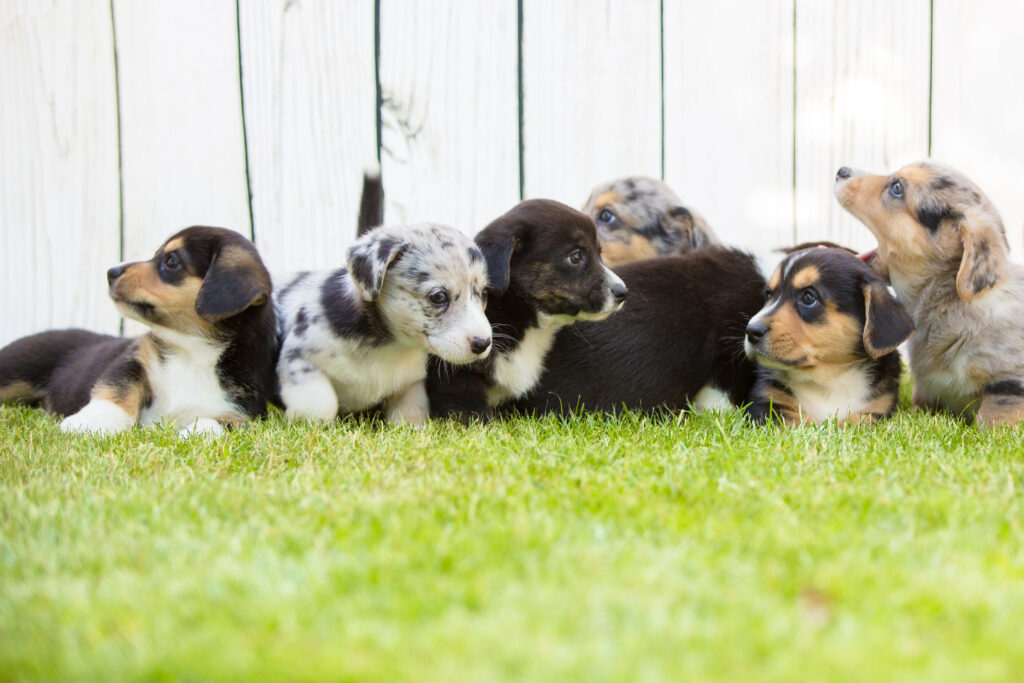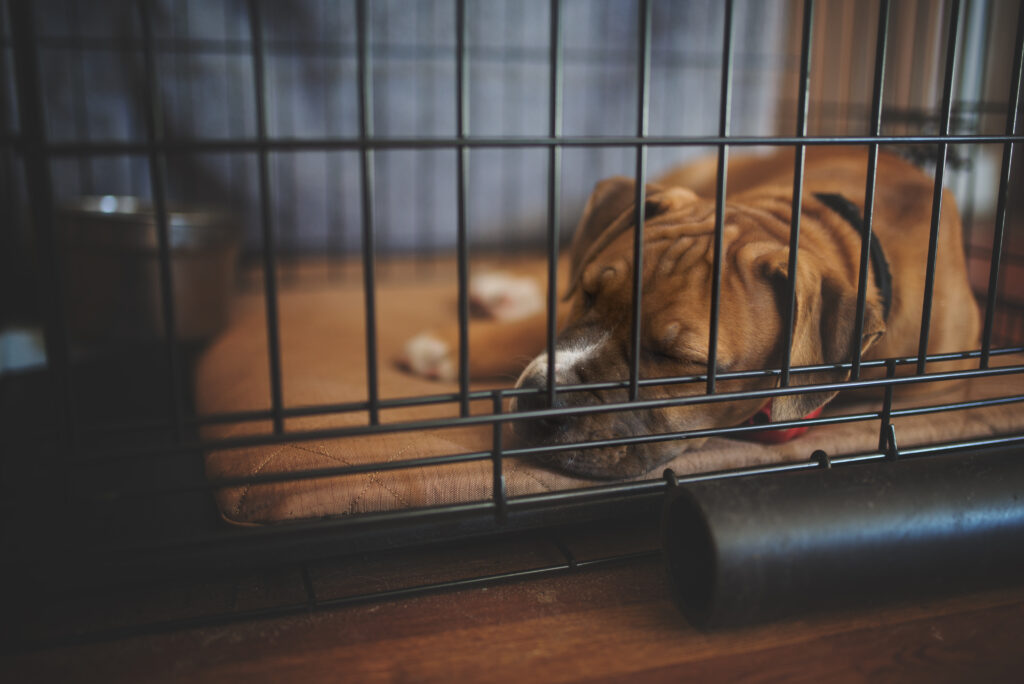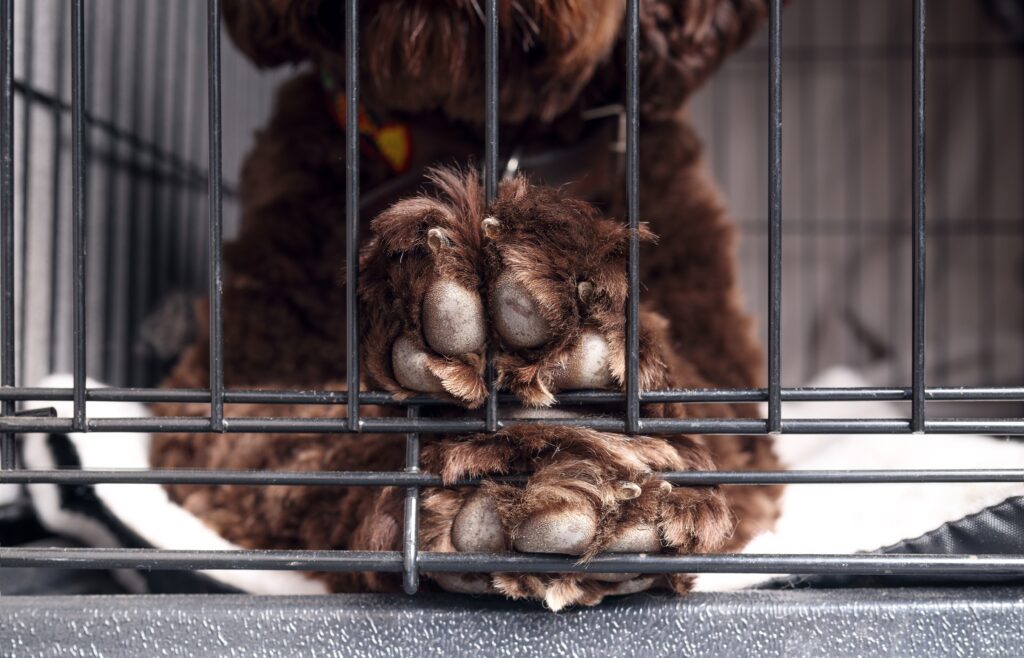Choosing the best puppy in a litter requires careful observation and thoughtful consideration of factors like temperament, health, and your lifestyle.
Here’s a step-by-step guide to selecting the right puppy for you…
Define Your Needs and Preferences
- Lifestyle Match – Consider your activity level, family situation, and living arrangements.
- High-energy breeds (e.g., Border Collies) require active owners.
- If you live in an apartment, look for calmer breeds or puppies with lower energy levels.
- Purpose – Determine if you’re looking for a pet, a working dog, or a show dog. Some breeders may offer puppies better suited for specific purposes.
- Family Compatibility – If you have children, other pets, or elderly family members, choose a puppy that shows calm and gentle behavior.
Observe the Litter’s Living Conditions
- Check that the puppies are raised in a clean, well-maintained environment with plenty of interaction and socialization.
- Puppies should appear lively, clean, and free from signs of neglect, such as unkempt fur, overly timid behavior, or poor hygiene.
- A good environment suggests that the breeder has taken proper care of their health and social development.
Assess Health and Appearance
- Look for puppies that have
- Bright, clear eyes (free of discharge or redness).
- Clean ears with no foul odor.
- Shiny coats without bald spots or excessive scratching (indicating good skin health).
- Wet noses with no excessive mucus or discharge.
- No signs of limping or weakness in gait.
- Observe stool for consistency—diarrhea can indicate health issues.
- Ask the breeder about vaccinations, deworming, and vet checks.
Evaluate Temperament
- Watch how each puppy interacts with you and their littermates
- Playful but not overly dominant – Look for a puppy that enjoys playing but doesn’t show signs of bullying or excessive shyness.
- Approachability – Puppies that willingly approach you are more likely to be confident and friendly.
- Comfortable being handled – Try picking up each puppy gently. Those that relax in your arms and enjoy the interaction are likely well-socialized.
- Curiosity and engagement – Puppies that explore their surroundings and interact with toys demonstrate a healthy and adaptable temperament.
- Avoid puppies that seem overly shy, fearful, or aggressive, as these traits may indicate future behavioral challenges.
Interact With Each Puppy Individually
- Spend one-on-one time with each puppy to evaluate how they respond to you
- Response to human interaction – Look for signs of bonding, such as tail wagging or seeking attention.
- Willingness to engage – Choose a puppy that is interested in playing with you without becoming overly excitable.
- Calm behavior – Watch for a balance of energy and calmness when handled.
- This personal interaction can reveal the puppy that best matches your personality and needs.
Perform a Few Simple Tests
- Noise Sensitivity – Clap your hands or make a soft noise to observe their reaction. A confident puppy will show curiosity rather than fear.
- Toy Test – Offer a toy or ball to see which puppies engage. This can help gauge their playfulness and personality.
- Gentle Restraint – Hold a puppy gently on its back. A puppy that quickly relaxes may have a more laid-back temperament, while one that struggles excessively may be more independent or dominant.
- Response to New Environments – Watch how the puppy reacts to a new setting. Confident and curious behavior indicates adaptability.
Ask the Breeder for Input
- A knowledgeable breeder can offer insights into each puppy’s personality and behavior. They spend the most time with the puppies and often track temperamental differences.
- Be honest about your lifestyle and experience level so the breeder can guide you to a puppy suited to your needs.
Avoid Picking Based Solely on Appearance
- While it’s natural to be drawn to the “cutest” puppy, prioritize temperament and health. A good personality and a healthy start will ensure a happier life for both you and the dog.
- If you’re drawn to a specific puppy for its unique markings or features, take the time to ensure its health and behavior match your needs.
Be Wary of Red Flags
- Avoid puppies that
- Show extreme aggression, excessive timidity, or fearfulness.
- Seem lethargic or uninterested in play and interaction.
- Have health concerns such as discharge from eyes, ears, or nose, or visible signs of illness.
- Reputable breeders will not pressure you into choosing quickly or refuse to answer your questions.
Trust Your Instincts
- Sometimes, a specific puppy will form a connection with you almost immediately. Trust that bond if it aligns with their health and behavior.
- Choosing a puppy should feel right—don’t feel pressured by the breeder, the timeline, or outside factors.
Test the Puppy in Various Scenarios (Optional)
- If possible, see how the puppy behaves in different situations, such as meeting children, new people, or being introduced to toys. This can give you insights into their adaptability.
Summary of What to Look For
- Healthy and clean appearance – Bright eyes, shiny coat, and no signs of illness.
- Balanced temperament – Playful, curious, and sociable without excessive dominance or shyness.
- Appropriate energy levels – Not overly hyperactive or lethargic.
- Positive interaction – Bonds with you during one-on-one time and responds well to handling.
By taking the time to observe and interact with the puppies in the litter, you can confidently choose the one that is best suited to your life and home.


